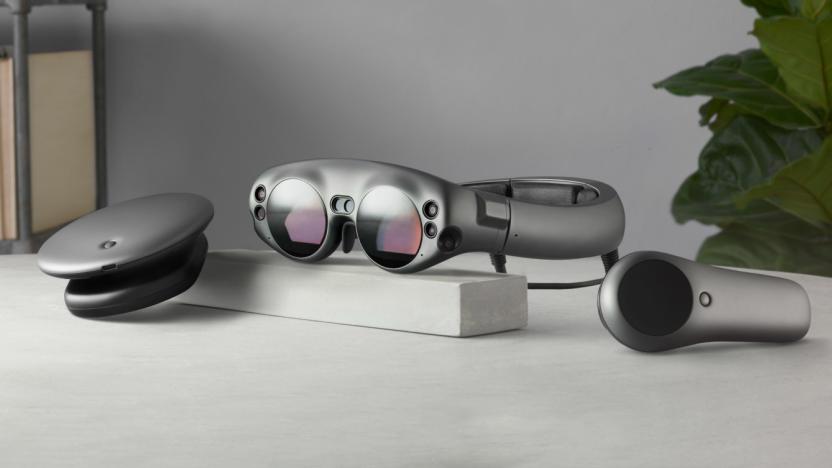odg
Latest

Magic Leap’s lackluster AR demo proves hardware is still hard
Magic Leap announced last week that its mixed reality glasses -- which have been shrouded in mystery and hype for almost four years -- will be available later this summer. What should've been exciting news unfortunately fell flat. In a developer chat on Twitch that same day, the company showed off a less-than-impressive prerecorded demo of a small rock golem throwing some rubble around. Compared to earlier videos of a crashing whale in the middle of a gym and a floating solar system, this just came off as disappointing. Was this all there was?

FedEx will use smart glasses to help pilots land in emergencies
Smoke is understandably a serious danger for aircraft, and not just in life-threatening situations -- the FAA notes that there's typically one smoke-related landing per day. But how does the pilot land with a smoke-filled cockpit where they might not even see the instrument cluster, let alone the outside world? FedEx and the Osterhout Design Group have an idea. They're showing off SAVED (Smoke Assured Vision Enhanced Display -- yes, it's a forced acronym), a hybrid smart glasses and oxygen mask system that provides data from the aircraft's HUD and external cameras to help with emergency landings. Pilots won't have to fly blind or risk passing out just to avoid a disaster.

ODG launches its Snapdragon 835-based mixed-reality glasses
The name Osterhout Design Group (ODG) might not sound all that familiar, but it has unveiled two mixed-reality smartglasses at this year's CES. These new devices, called the R-8 and the R-9, are two of the first wearables powered by Qualcomm Snapdragon 835. They're both capable of augmented and virtual reality overlays, though the R-9 has more-sophisticated features to go with its higher price point. It has a 50-degree field of view and 1080p resolution, whereas the R-8 has a 40-degree FOV and a 720p resolution. Further, it functions as a development platform for mobile AR and VR, as well as smartglass applications.

Mini's weird-looking AR goggles are actually useful
Augmented reality is supposed to be the future, but its current usefulness is pretty fuzzy. Sony's SmartEyeglass is reminiscent of your old monochrome monitors, Microsoft's HoloLens' games look intriguing, but who knows when that's coming out and Google Glass, well, we're not sure what the future holds for Glass. BMW's vision of augmented reality is still a ways off as well, but it's recently partnered with Qualcomm to announce something rather unexpected: a pair of AR glasses meant specifically for, of all things, driving a Mini. It looks and sounds ridiculous. But the thing is: It's actually pretty damn impressive.

NASA wants astronauts to wear smart glasses
As you might imagine, astronauts typically need to stay laser-focused on their missions -- even a brief distraction could lead to a broken part or some other crisis. They won't have to worry about keeping their eyes (and hands) on the ball if NASA has its way. It's teaming up with Osterhout Design Group to explore the use of both augmented reality and virtual reality glasses for astronauts, whether they're in space or safely on terra firma. Among the possibilities are "assisted reality" glasses that identify equipment controls or provide checklists, saving crews the hassle of checking manuals when they're rushing to fix a crucial machine. There's no timetable for when NASA expects this smart apparel to show up, but here's hoping that it's ready relatively soon. [Image credit: NASA]



